Hailed by Small Business Saturday UK as one of the most talented artists they’ve ever come across, Kent-based painter Emily Tull has forged an enviable reputation for herself over the last 20 years – most recently for her embroidered images.
Originally specialising as a painter in her Fine Art degree, it was only whilst stitching hessian onto a wooden frame that she had a light-bulb moment that moved her to stitch across the canvas itself.
Today she creates portraits and wildlife artworks by hand-stitching onto vintage and recycled materials. Her contemporary and versatile style of embroidered imagery has been recreated onto cards, limited edition prints, tote bags and cushion covers.
A regular participant in solo and groups shows, mainly in Kent and London, Emily has also won several awards. In 2017 she won the Kent Creative Award – Visual Arts (Non-Digital). She won first prize for ‘I Am Here’ in The Brain and Mental Health Exhibition at UCL in 2015, and her artworks have been displayed in the Mall Galleries Royal Academy Summer Show and been shortlisted in the Winter Pride Prize and the Ruth Borchard Self Portrait Prize. In 2014 she was a contestant in the Sky Arts Portrait Artist Of The Year competition.
In this interview, Emily describes how, from her first tentative, exploratory stitches, she became an award-winning textile artist and how she built a business selling cards and prints, exhibiting, taking commissions and running private and public workshops.
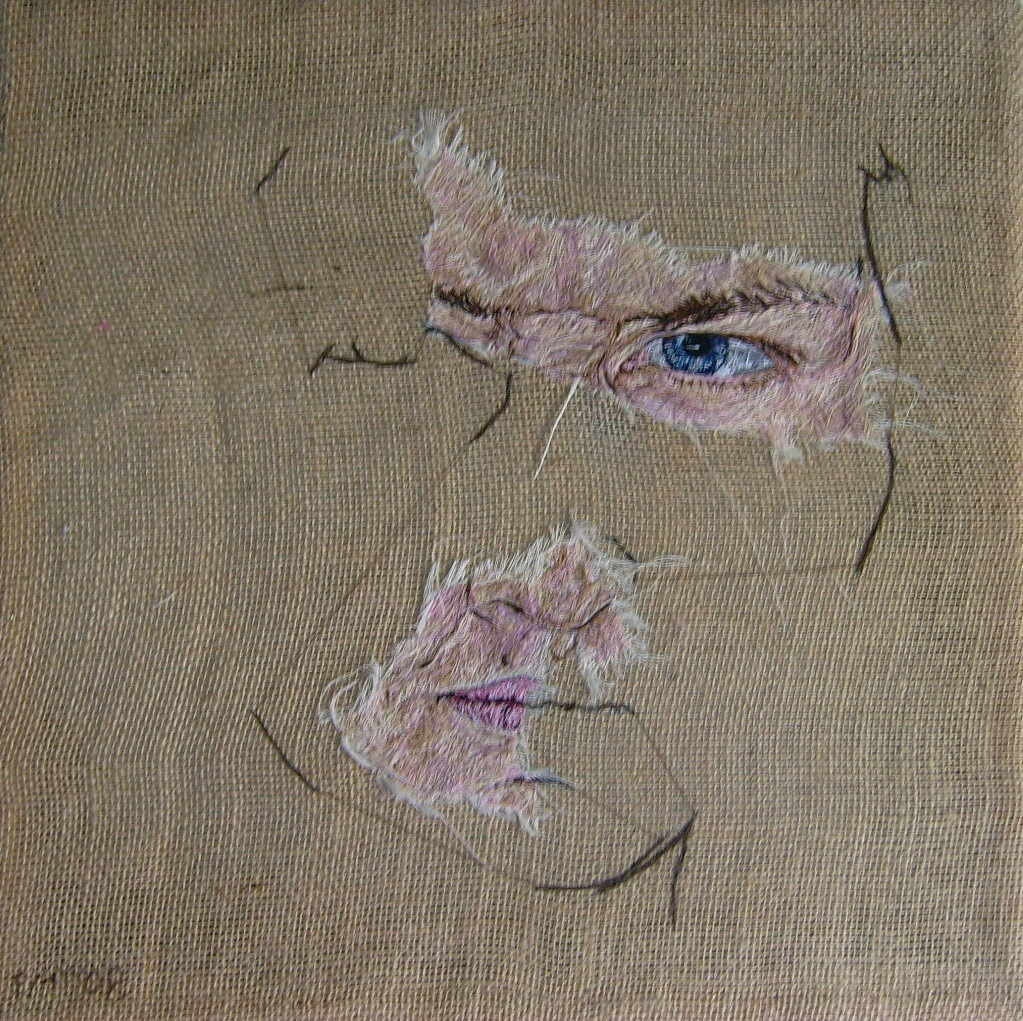
Thread painting
TextileArtist.org: What initially attracted you to textiles as a medium? How was your imagination captured?
Emily Tull: I originally trained as a painter, though I have always experimented with different techniques. I eventually got to a point where I was frustrated; I realised that the kind of finish I wanted to create was never going to be achieved with my style of painting. Over the years I had come across machine-stitched artworks, mostly quite simple in design. I recalled one in particular – black stitching on white fabric – that reminded me of a project I did at school, and that had stayed in my mind.
One day, whilst stitching hessian onto a willow frame, I had a light-bulb moment and decided to stitch a face onto that fabric. So, I took a scrap of muslin and drew my eye onto it, and then pinned that onto the hessian. I cobbled together a few threads and hand-stitched a basic eye over my drawing. I seem to remember thinking the result was awful, but I enjoyed the process. It reminded me of using colouring pencils, and drawing is my favourite technique, whether it be a quick sketch or very detailed.
The final look of a stitched piece is much finer in detail, which is what I craved as a painter, so discovering this has opened up a wider range of subject matters to me. With the stitching I gain more control, it can easily be removed and, apart from the stabbing of fingers, it can be very therapeutic.
From this initial experiment, and having bought some more colours, I went on to make three male portraits. I find I am not as precious with my artworks (unless I’m using expensive fabric) as I was with my paint. I have become more freed up to use sandpaper and rip materials. I call my medium ‘thread painting’, because it is the thread/stitching that I am interested in, and I don’t just stitch into fabric but also wallpaper and plastic.

What or who were your early influences and how has your life/upbringing influenced your work?
I was lucky enough to grow up in a creative family; marquetry, leather-work, knitting and music were just some of the things I experienced. My early memories are of my great grandmother’s paintings displayed on my nan’s walls, some of which I recently found out are actually hand-stitched.
It’s interesting looking back as an adult to your childhood, being more aware now of what did influence me and perhaps is in my genes. Both my great-grandmother and mother had careers as seamstresses, and I grew up, not just in clothes that were home-made, but made with scraps of fabric, some of which have appeared in my artwork.
Growing up, I had the freedom to draw, paint, clay-model and generally make a mess. That allowed me to develop a love of all things creative. The first art book we had at home was one about Japanese artists – the nature scenes still inspire my work now.
For me, the things I studied as a student are still a main source of information for my work. These include mythology, ripped wallpaper, broken doll heads and tomb paintings. All my portrait work has been inspired by artists including Francis Bacon, Van Gogh, Lucian Freud and Kathe Kollwitz. I am still mainly inspired by painting and see myself as a painter.
I believe that your first influences are the strongest and never leave you, but of course, you gain more as you grow up.

What was your route to becoming an artist?
I don’t believe you become an artist, it’s something that’s inherent in you. But, in terms of education, I did a degree in Fine Art at Kent Institute of Art & Design where I specialised in painting but actually did a variety of techniques. I had started to exhibit as a student and I continued painting and exhibiting straight after graduating.
In 2001, in the early years after graduating, I was very lucky to work for the community art company Isle Of Thanet Arts in Ramsgate. I worked, not just on murals, but carnival builds and lantern parades. This involved working large scale, learning new techniques and using new materials. The company gave me exhibiting opportunities and contact with a large network of other local artists who introduced me to different galleries and other events.
My boss at Isle Of Thanet Arts (aside from my family) was the first to see my thread paintings, I had only stitched three portraits at this point so there wasn’t a lot to go on, but he liked them and put them into the open exhibition at the gallery. Shortly after this RBSA accepted two artworks into their portrait prize show, I was extremely lucky very early on and if it wasn’t for these two opportunities I may not have continued with this technique.
So, for me the change from paint to thread was seamless – excuse the pun! I don’t know if that was because I was known as an ‘artist’ before the changeover.
From this great start, it’s not always been easy and opportunities have been thin on the ground. I have found that the acceptable media for exhibition or competition categories, or even those accepted for open calls, have rarely included textiles. So I have always described my work as paintings and still entered.
It wasn’t until 2014 that I first got my work shown in London. That opening could be down to a better understanding that art is not just painting, or I just entered the right piece – there are so many factors involved.
I sometimes hear comments like ‘oh yes, my wife does needlepoint’. People don’t know how to describe the technique. It’s still early days for textile art and all the textile artists are out to educate. Things are improving but there is a long way to go before textile-based art is on an equal footing with painting.

Wallpaper and plastics – pushing the boundaries of stitched textiles
Tell us about your process from conception to creation
The ideas for my work can be inspired by a piece of fabric, by lyrics from a song or a line of poetry.
Often I have a title first which helps me put together the image and fabrics required. This is normally the case for my portrait work. First, I have to work out who the model will be (normally a friend or family) and take photos. The pose has normally been decided by this point. Often, a little drawing is done in my sketchbook, generally to decide on shapes to cut the material, or, if it is a more complex design, to lay out all the components and write an inspirational story around it.
In the creation process, I do a rough initial sketch and typically attach the background fabric first, unless it is being used as an outline and then it will go on last. I still use muslin as my skin base. That is pinned on as a large piece and I start cutting away pieces. Then the stitching starts, always with the eyes first and, once happy with those, I work outwards from there, still cutting away as I go. It’s an organic process and I go with what feels right.
Creating wildlife isn’t too much different, it all depends on what fabrics I am using. Sometimes I do the drawing on a thin cotton fabric which I then cut out and pin onto the base fabric. Again, the eyes get stitched in first and it spreads out until the whole image is complete.

Tell us a bit about your chosen techniques and how you use them
I only have one technique which is hand-stitching. As I don’t have any training in this subject, it has given me the freedom to manipulate it without the restrictions of prior training.
I can’t really explain the process as such, because all it is is a basic stitch which varies in size and is layered up. If the thread knots up I leave it and stitch it in to add texture, especially in wildlife pieces.
Often the stitching tension is manipulated when I work on a sculptural piece. Pulling in the material tight helps create the 3D effect – that is best seen in my recent mermaid purse artworks.

What currently inspires you?
I have a few projects on the go: an ongoing one is wildlife conservation, inspired by the beautiful Chinese painted wallpapers. I have started a series where birds or insects that are often found in the garden, such as sparrows, are only partly stitched onto wallpaper. I have especially selected species that are dramatically declining in numbers, hence only being partially represented.
This theme continues over into a joint project with Stacey Chapman, aka ArtSeaCraftSea. For the last three years, we have worked on Fish Face, all about the issues surrounding fisherman and ecology.
A development of my work along the lines of environmental conservation – and the hot topic of plastic pollution – has been the sculpting with stitch of sea-life creatures out of popular branded packaging. I spent a day collecting rubbish off my local beach, including tyres, cutlery and netting, to make a mound of rubbish with hand-stitched sea-life mixed in. I plan to continue this and expand on the species to include not just marine life, but also that of the countryside.
My interest in wallpaper, was partly inspired by the conservation theme, but also I have always enjoyed looking at layers of peeling or ripped paper; it gives a sense of history and personality to a building. This theme first came about in my fabric-based work, using floral materials against contrasting patterns and colours. Now I have turned to using actual paper – it is a challenge to stitch, but that’s what I like most – pushing the boundaries of what I can stitch and in how much detail. I prefer to use vintage wallpaper as it is sturdier and has less of a slippy surface for the needle.
In my latest artworks, only the eyes are stitched in, giving only a hint of the person with a silhouette cut out of a contrasting paper to the background.

Evolution and experimentation
Tell us about a piece of your work that holds particularly fond memories and why?
In 2014 I was lucky enough to be a contestant in the Sky Arts Portrait Artist of the Year series, where I had the opportunity to have Lord Melvyn Bragg as a sitter. The experience was a challenge and dream-like, looking back at it.
We had just four hours to produce a portrait – a timescale which normally, for me, would be just enough time to stitch an eye! It made me really rethink my normal process and change how I worked after that day, with the result of speeding up my stitching.
I was really pleased with how much I did in four hours, even though it took me another thirty hours to finish it at home.
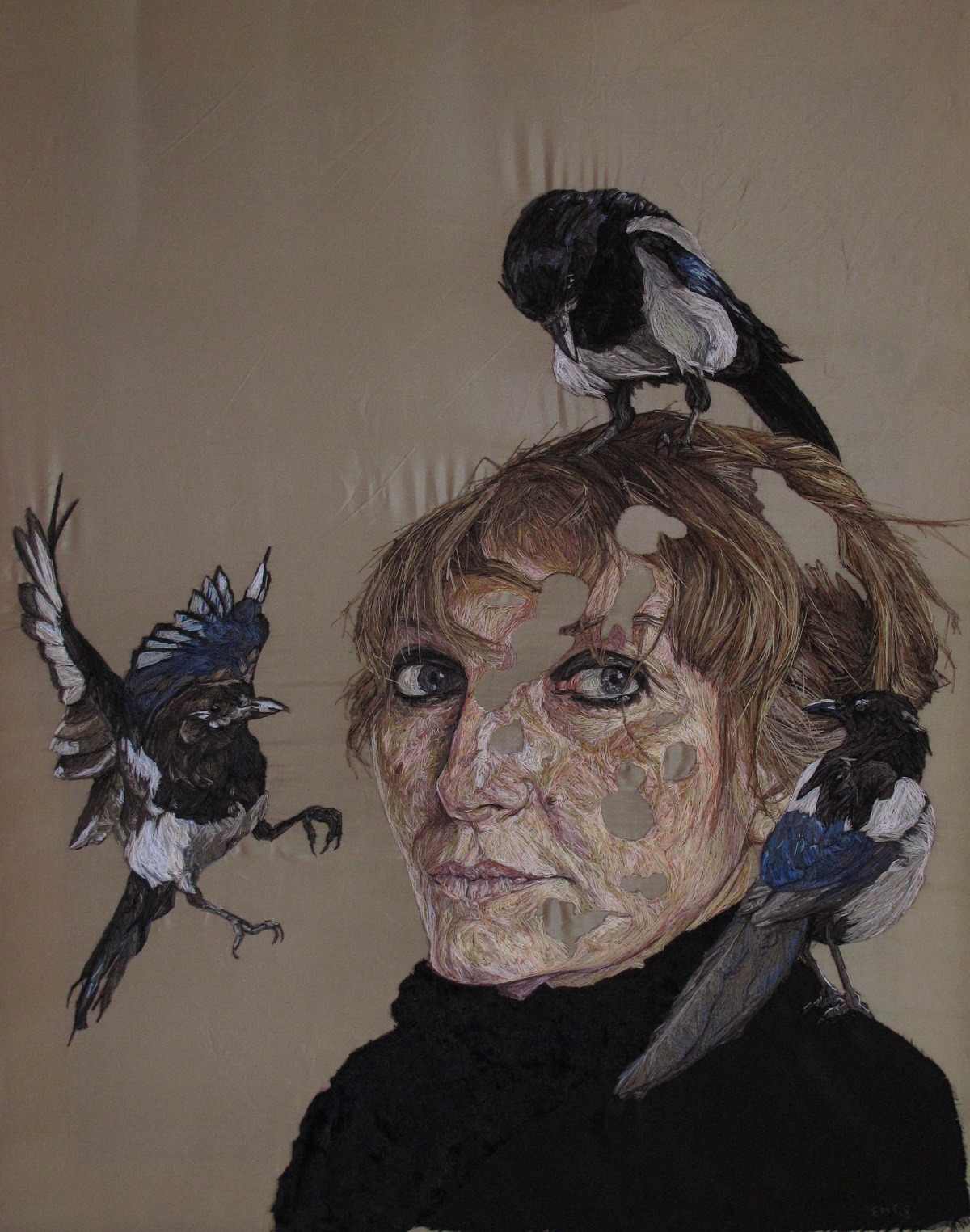
How has your work developed since you began and how do you see it evolving in the future?
Alongside the themes behind my work evolving from tomb paintings to ripped wallpaper and the change in the materials that I’m stitching into, there is now a blurring of the lines between portrait and wildlife.
This year I have created three portraits that have included wildlife, introducing another dimension to people’s personalities and an observation on mankind’s relationship with nature. It’s a theme I want to continue and explore, and it’s been good to join together themes that have remained very separate until now.
Alongside this, I want to carry on experimenting with the surfaces that I can stitch into 2D, 3D and installation displays.

What advice would you give to an aspiring textile artist?
This is the same advice I would give any artist: in the era of social media, everyone should have an online presence, whether that be a full blown website or a profile/portfolio on Facebook, etc.
From there you can connect up with other like-minded artists who can inspire or give you advice.
For more information visit emilytull.co.uk and Instagram
If you’ve been inspired by this article, let us know by leaving a comment below. Do you know what your next step will be?

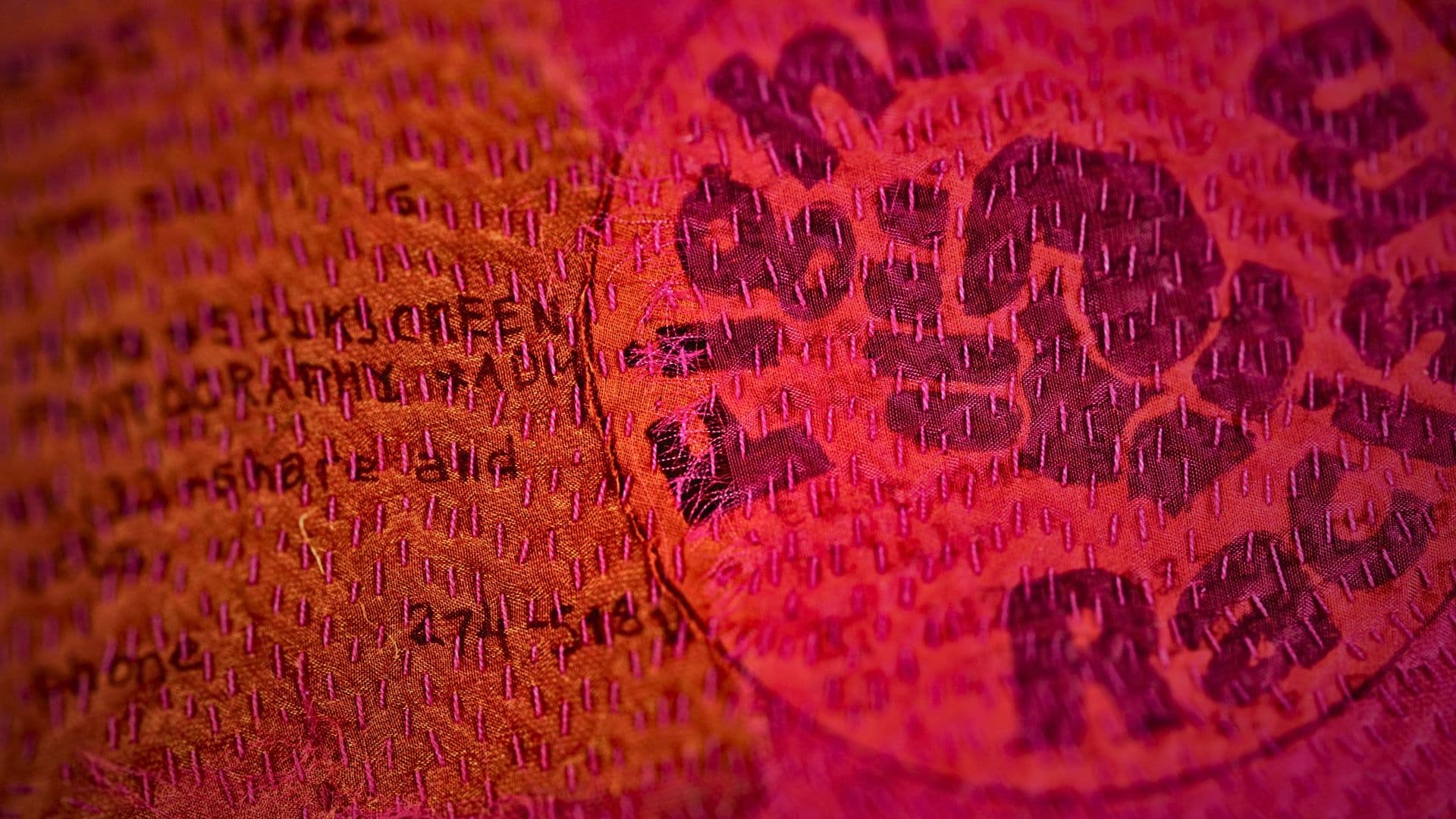
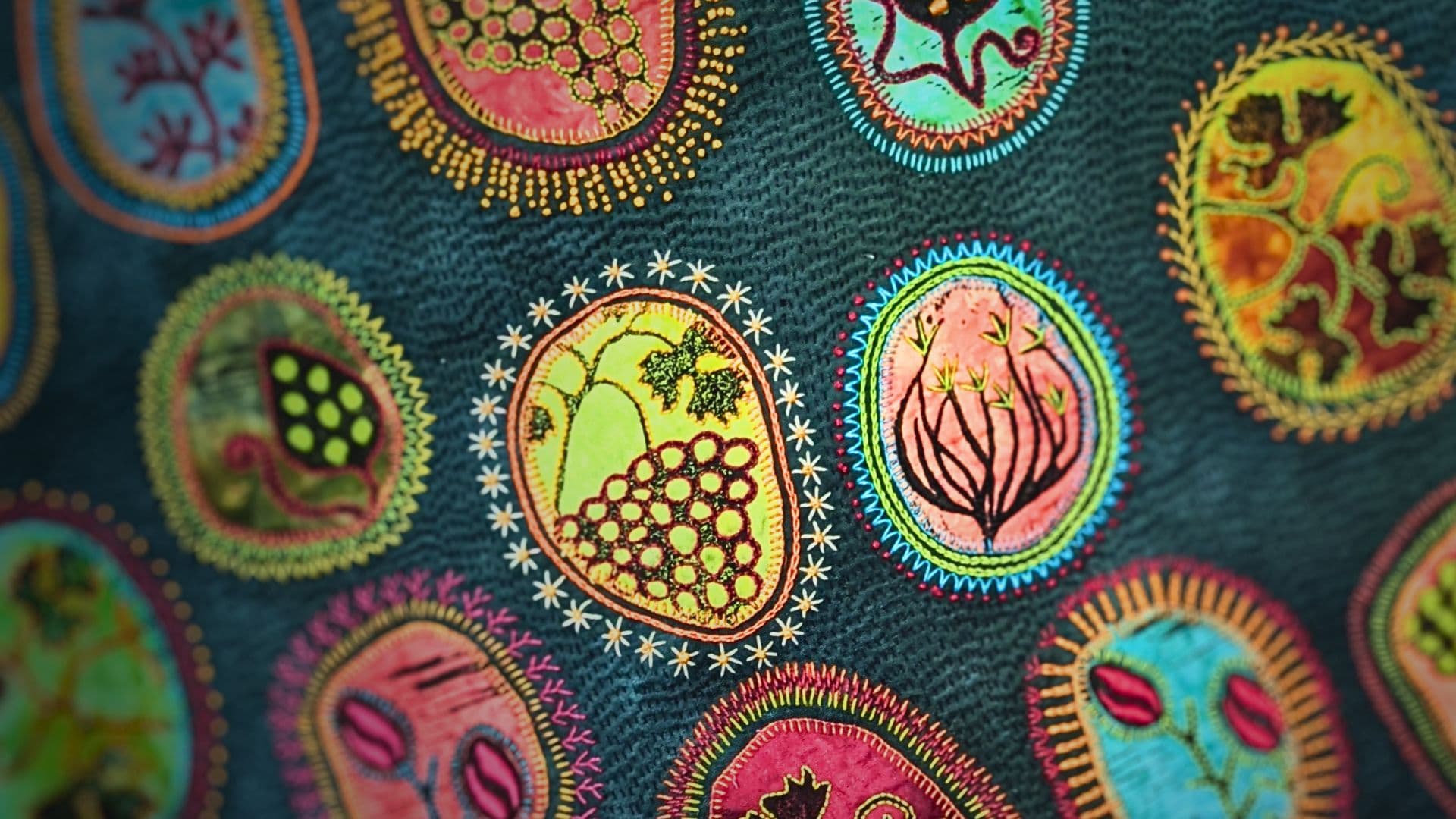
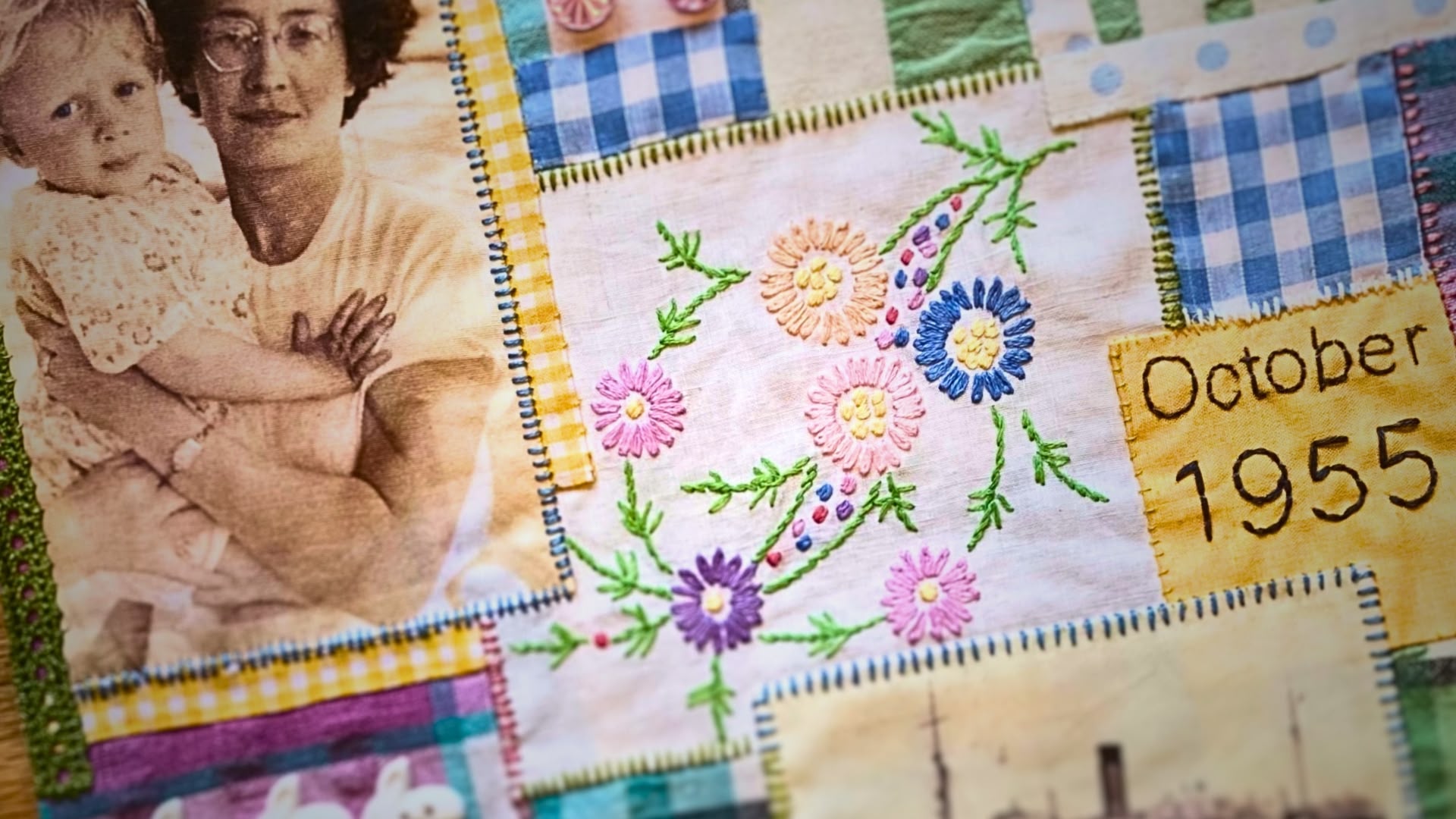
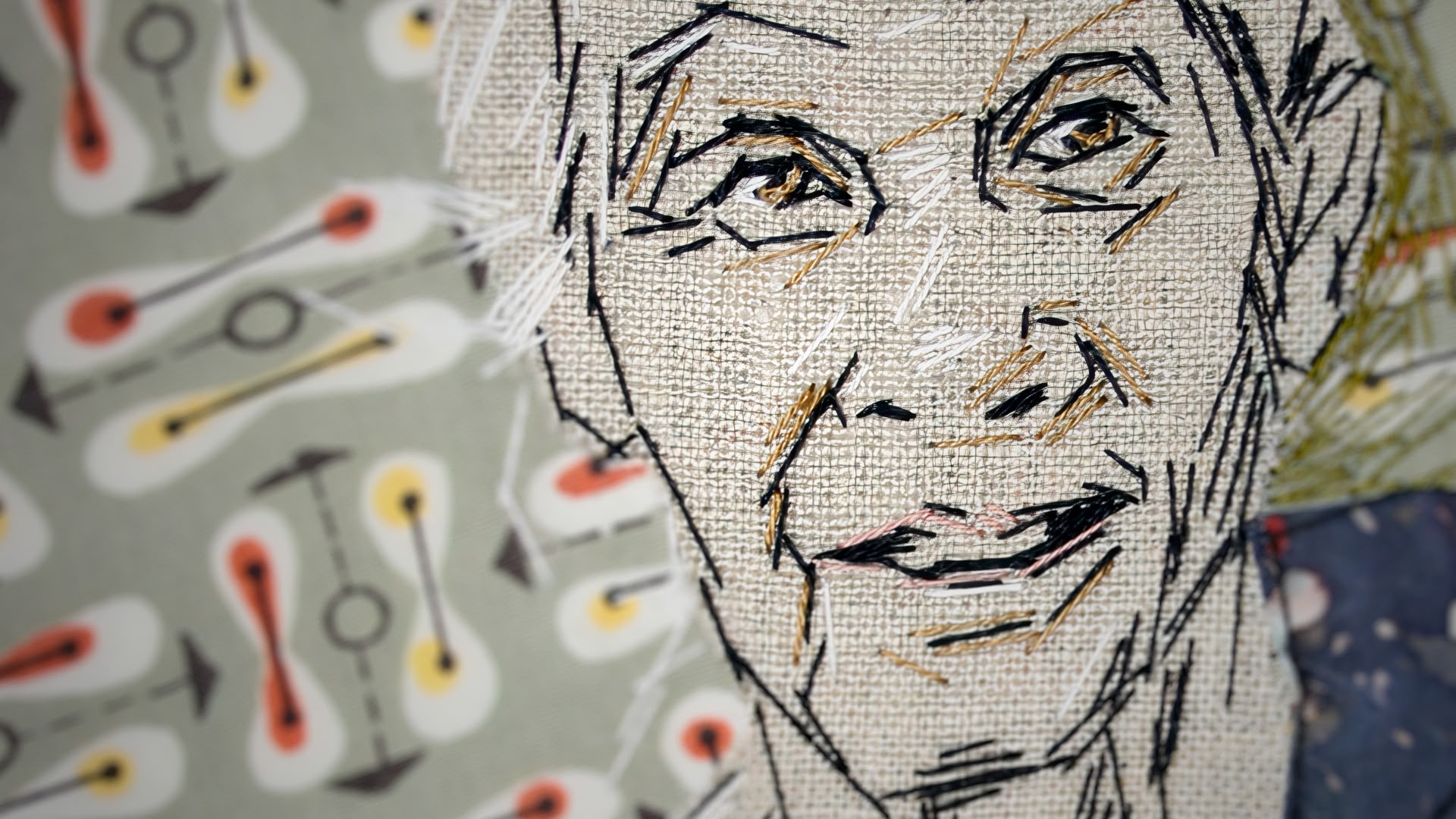
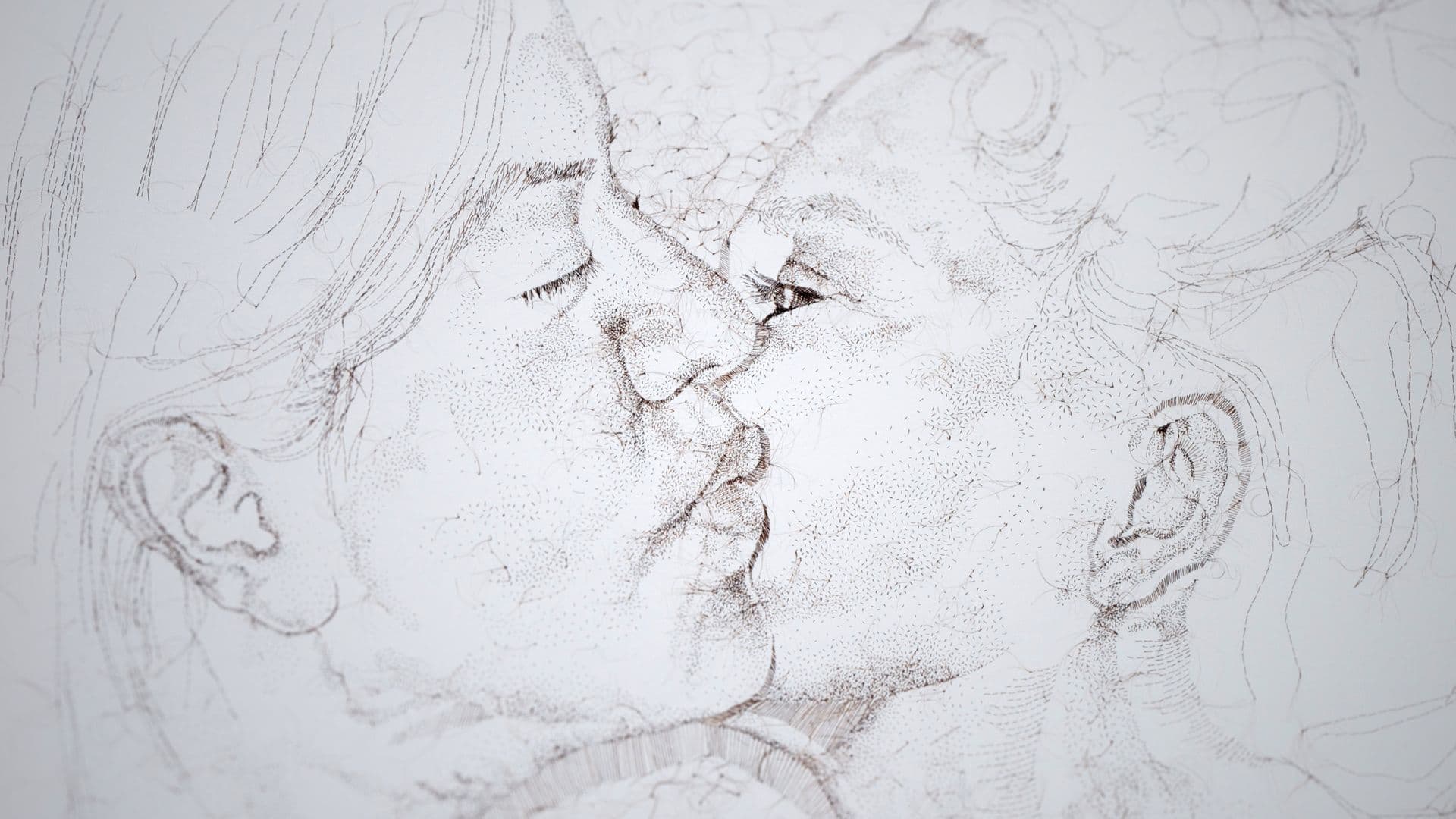
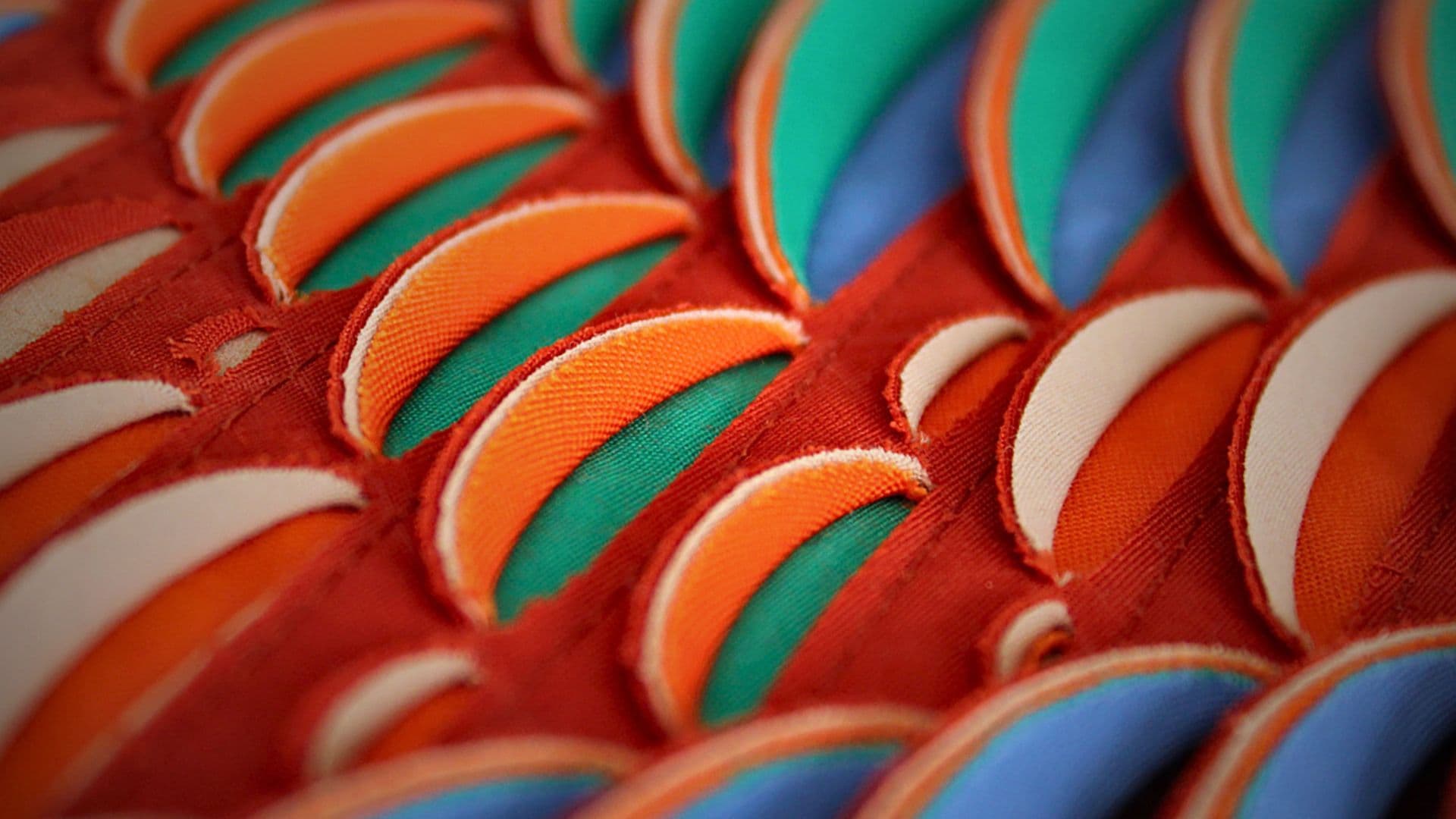

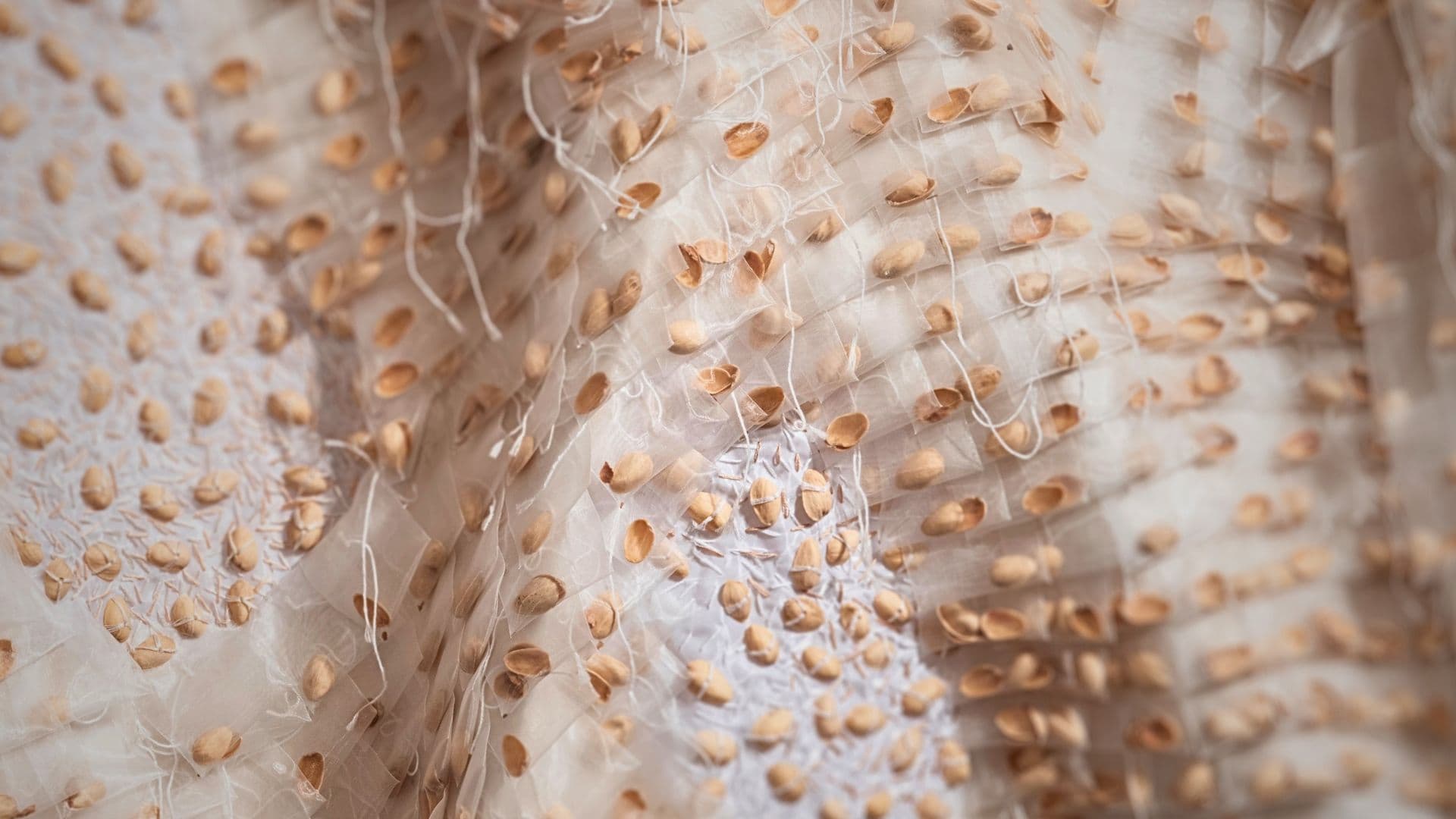
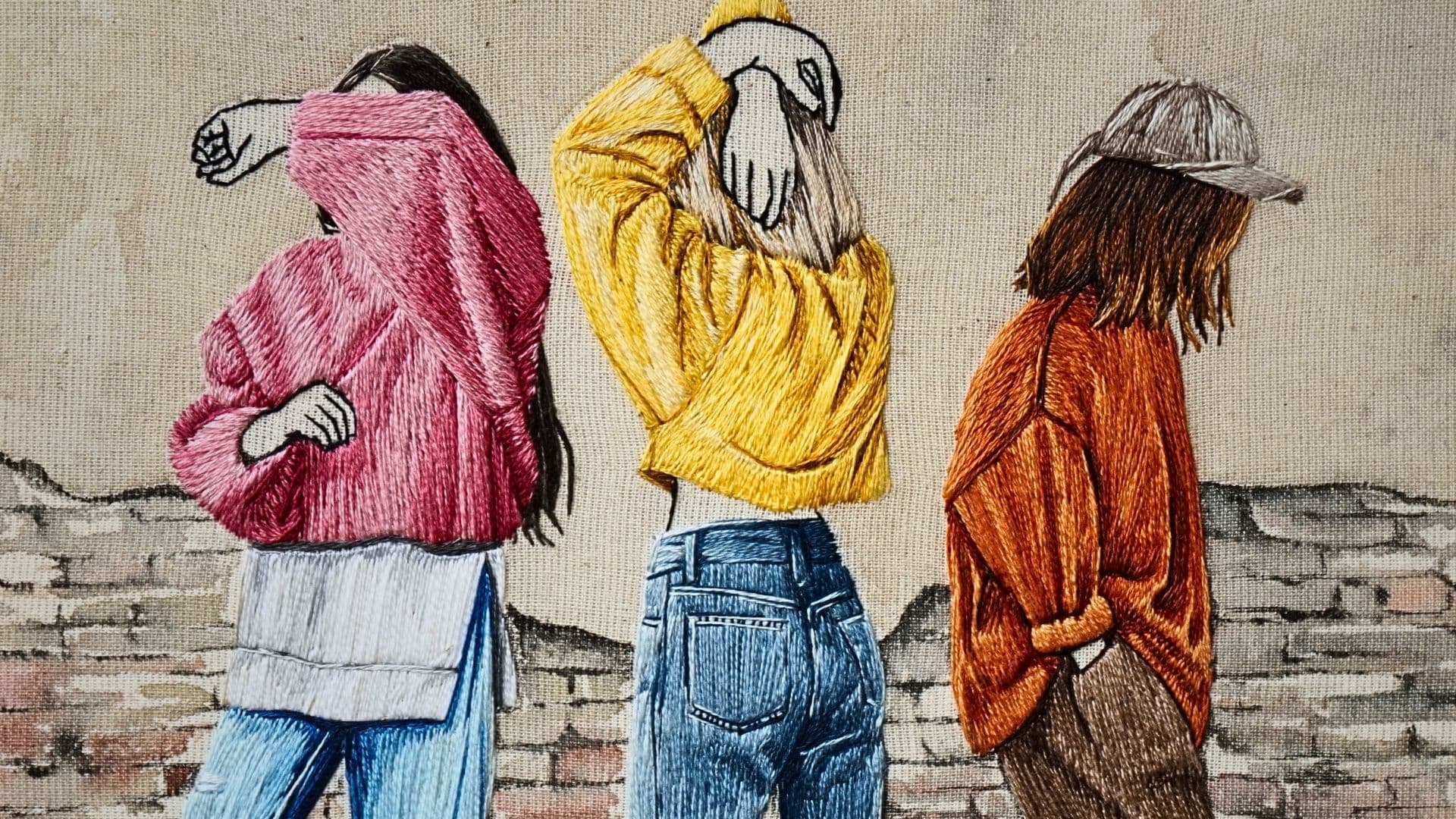
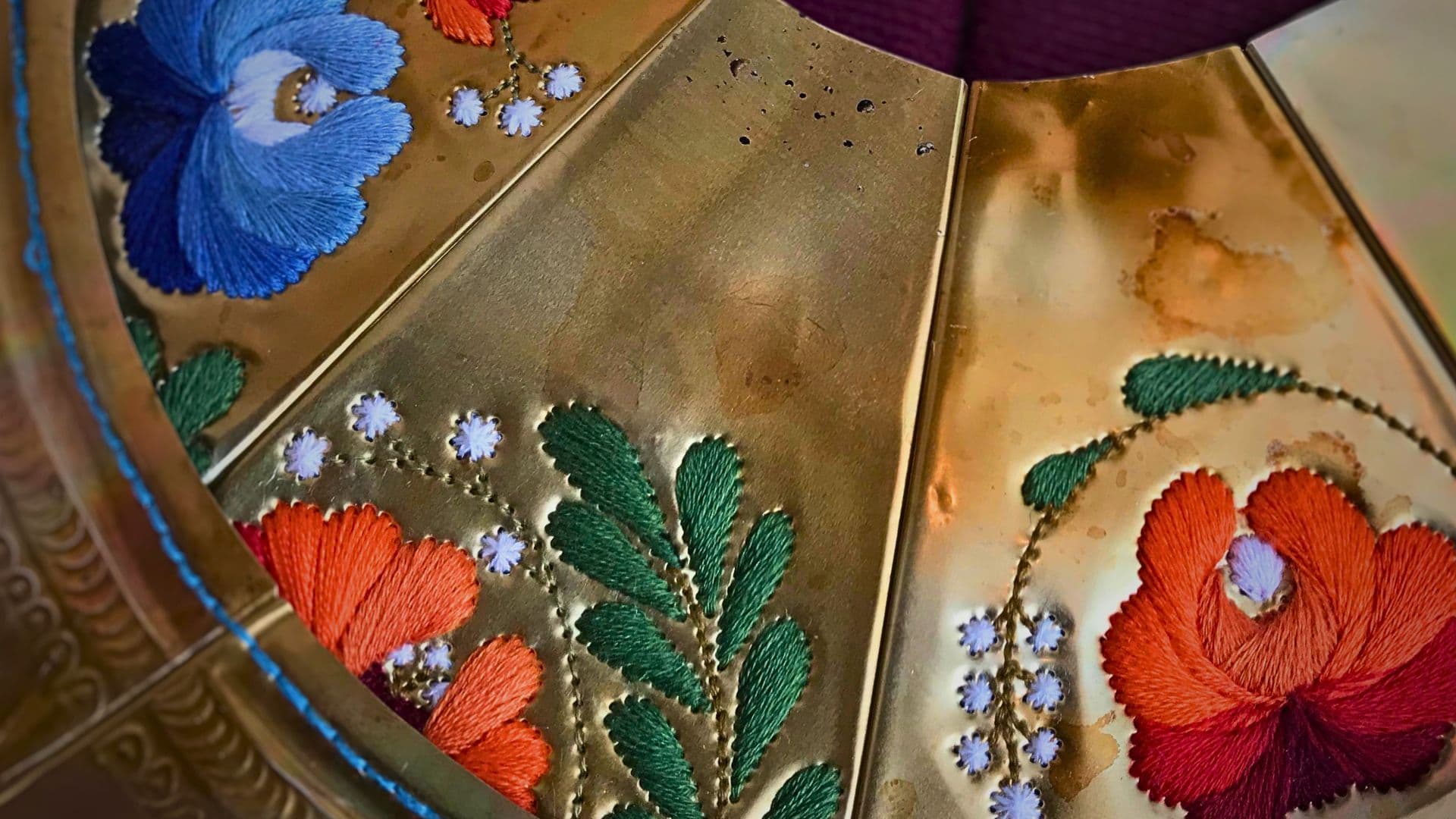
9 comments
Lindy Gibbon
I loved this article and reading about Emily’s process was inspirational. Emily comes across as very approachable and thoughtful in her willingness to share her ideas and the challenges she has encountered. Delightful. Thank you very much for sharing.
Rebecca Quaid
Thank you, Emily! Stunning creations!
Barbara Bexley
I love Emily’s portraits. They are the epitome of ‘more is less’. When the eyes are right there is room for the viewer/observer in her portraits. Thank you Emily.
Diana Springall
Great work and a valuable vision for the subject.
Jayne Hanson
I’m so pleased that you have Emily Tull back. Her work is amazing and I am inspired to get back to portraits.
Win Willcox
Incredible work this is pure genius
eva andrew
Thank you for such an inspiring article! I have continually come back to stitching from the other media but never fully satisfied. The work of Emily Tull gives me inspiration to start again…and looking forward to it! Thank you!
Lindi Green
I really enjoyed reading about Emily Tull’s work. I found her approach very helpful. I too, tend to start in the middle of a design and work out.
I also found the textures of her work comforting. Sometimes, when I look at what I have done, I am very critical if it’s not totally neat. Allowing the thread to make it’s own mark can clearly give work an extra vitality.
Sharron Begg
I am totally inspired !
I love Emiy’s portraits !